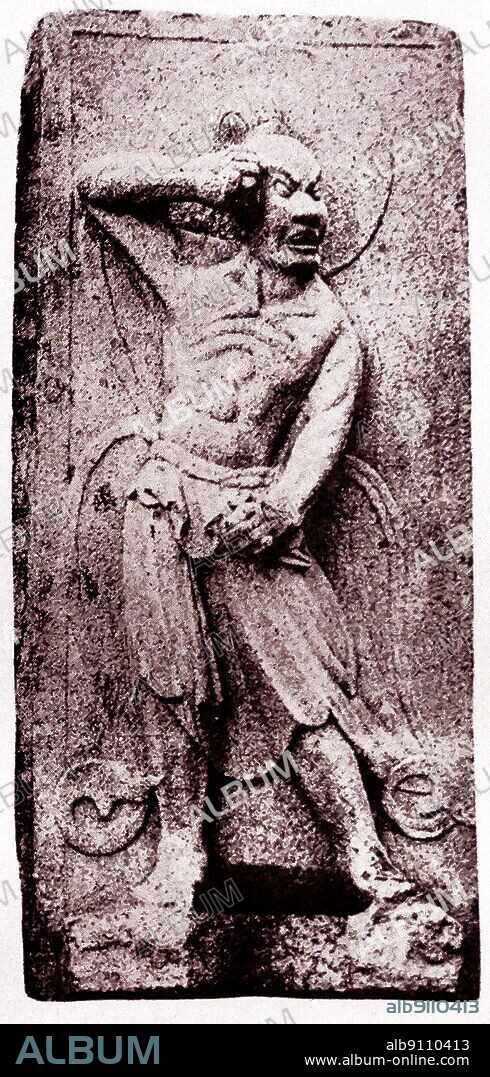alb9110413
Keumgang-yeoksa, Gate-Guarding Buddhist Devas from Silla Kingdom, Korea

|
Añadir a otro lightbox |
|
Añadir a otro lightbox |



¿Ya tienes cuenta? Iniciar sesión
¿No tienes cuenta? Regístrate
Compra esta imagen

Título:
Keumgang-yeoksa, Gate-Guarding Buddhist Devas from Silla Kingdom, Korea
Descripción:
Traducción automática: Granito: relieve en la pared de la entrada a la Gruta Seok-gu-ram (Templo de la Cueva), Kyeongju. Los Keumgang-Yeoksa son considerados seres sobrenaturales en el budismo que guardan las puertas del templo. En Corea, se han establecido similitudes entre la postura de los Guardianes de la Puerta y la postura básica del Taekwondo. Algunos afirman que la existencia misma de estos seres en el budismo y representados en todas las ramas budistas de Asia tiene su origen en el ser legendario griego: Heracles. La gruta Seokguram está registrada como Patrimonio Mundial de la UNESCO y como el Tesoro Nacional de Corea número 24. La Gruta Seokguram fue iniciada en 751 por el rey Kyeongdeok de Silla y completada por su hijo en 774 por el rey Hyegong de Silla. La Gruta fue construida para ilustrar el momento en que Sakyamuni alcanzó la Iluminación. Escultura de la época de Silla Unificada (668 - 935)
Granite: relief on the wall of the entrance to the Seok-gu-ram Grotto (Cave Temple), Kyeongju. The Keumgang-Yeoksa are regarded as supernatural beings in Buddhism that guard the gates of the temple. In Korea, similarities have been drawn between the posture of the Gate Guardians and the Taekwondo basic posture. Some claim that the very existence of these beings in Buddhism and depicted in every Buddhist branch in Asia is originally from the Greek legendary being: Heracles. The Seokguram grotto is registered as a UNESCO World Heritage and as the Korean National Treasure number 24. The Seokguram Grotto was initiated in 751 by King Kyeongdeok of Silla and completed by his son in 774 by King Hyegong of Silla. The Grotto was built to illustrate the moment when Sakyamuni achieved the Enlightenment. Sculpture from the time of Unified Silla (668 - 935)
Crédito:
Album / Universal History Archive/Universal Images Group
Autorizaciones:
Modelo: No - Propiedad: No
¿Preguntas relacionadas con los derechos?
¿Preguntas relacionadas con los derechos?
Tamaño imagen:
3169 x 6617 px | 60.0 MB
Tamaño impresión:
26.8 x 56.0 cm | 10.6 x 22.1 in (300 dpi)
Palabras clave:
BAJORRELIEVE • BAJORRELIEVES • BUDA • BUDISMO • BUDISTA • BUDISTAS • CHINO • COREA • COREANO • CUEVA • DEIDAD • DEIDADES • DIVINIDAD • EN RELIEVE • ENTRADA • GRANITO • PATRIMONIO DE LA HUMANIDAD • RELIEF • RELIEVE (ARTE) • RELIEVE • RELIEVES • RELIGION • RELIGIOSOS • REY • S. VIII • SIGLO VIII S. VIII OCHO 8 • SIGLO VIII • TEMPERA • TEMPLE • TEMPLO • UNESCO
 Pinterest
Pinterest Twitter
Twitter Facebook
Facebook Copiar enlace
Copiar enlace Email
Email
